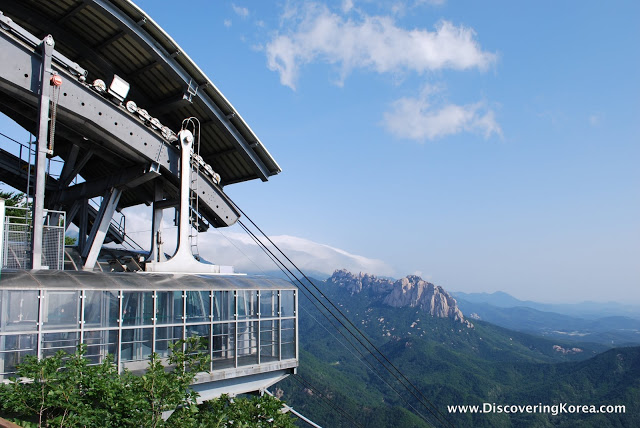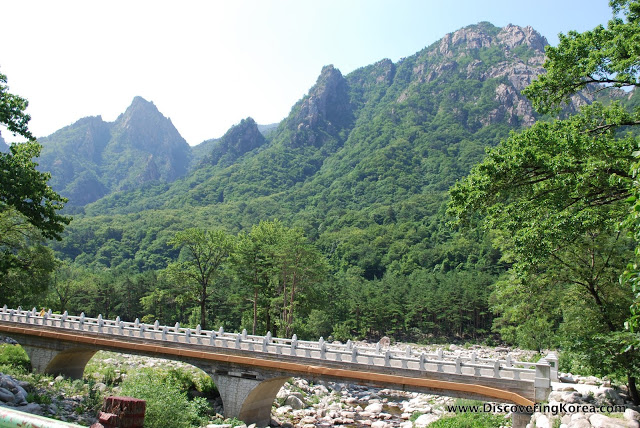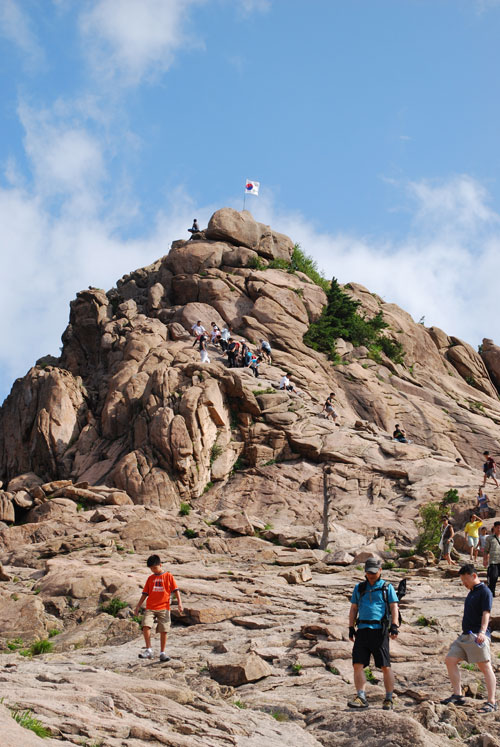Today, we indulge in a summer ritual: the road trip, by starting a three-part exploration of Gangwon Province on Korea’s eastern shore. If I sound a little bit tired today, it’s because I just got back from a three-day, 800-kilometer road trip in Korea’s Gangwon Province.

Gangwon-do is a big, beautiful place, so there was a lot of ground to cover. But thankfully, my two travel buddies, KBS World’s very own Abby Rhodes and our friend Do-hoon, were also along for the ride.
We departed Seoul before sunrise on Saturday morning, eager to escape the throngs of city folks who head east each summer to enjoy Gangwon Province’s scenic mountains and the white sand beaches along the Donghae (동해), or East Sea.

On the way, we watched the sun rise over the Taebaeksan mountains and followed winding roads that mimick the paths of some of Korea’s largest rivers. And although we were just 90 minutes away from downtown Seoul, I could see how Asiatic Black Bears still roam Gangwondo’s seemingly endless hills of Korean pine.
Although we weren’t lucky enough to see a real bear, a statue of one greeted us at the entrance of Outer Seorak, the most popular access point to majestic Seoraksan mountain (설악산).
Rising 1,708 meters but within eyeshot of the beach, Seoraksan mountain is one of the country’s most popular national parks and its only UNESCO conservation area, thanks to its variety of plants and animals.

Each year, millions of visitors view the mountain’s famous craggy peaks and spectacular fall foliage. During the summer, the mountain is still breathtaking and it’s easier to beat the crowds.
Although Seoraksan mountain’s trails can take days to trek, my friends and I were pressed for time. So, we took the 1.1-kilometer cable car to Gwongeumseong (권금송). From there you can take a short hike to a rocky summit. A few couples and one tour group were inching their way up the windy final stretch and were rewarded with a rainbow and 360-degree views.

But it’s the rush of pushing your body to its limit that makes hiking fun, right? So, Abby, Do-hoon and I took another hike to Geumganggul (금강굴), a small cave and active Buddhist shrine that’s etched into a wall of rock.
On the way down we stopped to soak our feet at Biseondae (비선대), a valley filled with rushing water and cool jade-colored pools that’s surrounded by jagged rock formations.
A restaurant was tucked into the hillside, so we snacked on a big plate of delicious dotoreemuk (도토리묵) or seasoned acorn jelly salad. Back at the park’s entrance, we visited the colorful buildings and a large statue of Buddha at Shinheungsa temple (신흥사).

With a lot left on our Day 1 itinerary, we couldn’t see Seoraksan mountain’s many other natural treasures, like its waterfalls, a huge “tottering” boulder and, of course, the summit. Instead, we considered soaking our feet in a mineral hot spring.
Osaek Hot Springs are easily accessed via Seoraksan’s south entrance. The springs’ iron, carbonic acid and sodium are said to be good for the skin and stomach problems.
Speaking of stomachs, for lunch our trio shared two Gangwon-do specialties: a soft seafood tofu soup and grilled hwangtae (황태), or dried pollock.
Afterwards, our legs were a bit achy but our tummies happy, so, we headed for the beach. … check back soon for that post!
For Your Information..
| Open: | Trails generally open sunrise to sunset |
| Admission Price: | Free |
| Address: | Gangwon Province Sokcho-si Seoraksan-ro |
| Directions: | From Sokcho bus terminal, take bus #7 or 7-1 to Seorak-dong (the final stop) |
| Phone: | 02-1330 |
| Website: | Official Site |
About Matt Kelley
Matt Kelly is native of the US Pacific Northwest and is half-Korean by ethnicity. He lived in Korea for five years and has written hundreds of travel guides for Wallpaper, TimeOut, the Boston Globe and Seoul Magazine and was a host for several different variety shows on Korean radio and television.
